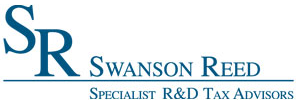TEXAS INVENTIONINDEX | JULY 2025
July 2025: 1.27% (A grade)

Texas inventionINDEX July 2025: 1.27% (A grade)
The inventionINDEX measures innovation output by comparing GDP growth with patent production growth.
Anything over C grade is positive sentiment; anything under C is negative outlook/sentiment. Using that sentiment, it is possible to observe trends over time, and also compare states/countries. In doing so, we can predict which states have the best chance to recover economically from the pandemic (or any other economic incident that may occur).
Texas inventionINDEX Scores – Last 12 months
| Month | inventionINDEX Score |
| July 2025 | 1.27% |
| Jun 25 | 1.14% |
| May 25 | 1.18% |
| Apr 25 | 1.22% |
| Mar 25 | 1.10% |
| Feb 25 | 1.15% |
| Jan 25 | 1.27% |
| Dec 24 | 1.16% |
| Nov 24 | 1.10% |
| Oct 24 | 1.31% |
| Sep 24 | 1.15% |
| Aug 24 | 1.08% |
| Jul 24 | 1.29% |
Based on the historical data for the last 60 months, the Texas inventionINDEX demonstrates a dynamic but generally strong performance, with scores consistently fluctuating within the B and A rating ranges. A review of the table shows that the index has not dropped below a B- rating in the past five years, indicating a persistent and resilient level of inventive activity. The most recent score in July 2025, at 1.27% with an A rating, reflects a positive trend, building on a period of sustained A and B ratings throughout the preceding year. This steady performance suggests a healthy environment for innovation, where both incremental and significant inventive efforts are being consistently generated.
A high inventionINDEX score and a corresponding A or A+ rating are indicative of a thriving innovation ecosystem. Such performance suggests that the state’s intellectual property output is growing at a rate that is strong in comparison to its economic growth. This positive correlation often leads to several favorable outcomes, including increased economic competitiveness, job creation, and the attraction of capital investment. Periods of exceptionally high scores, such as the 1.48% in August 2023, reflect moments of significant inventive acceleration. These peaks in performance signal a robust and vibrant environment where new ideas and technologies are flourishing, positioning the state as a leader in technological and economic advancement.
Conversely, a lower inventionINDEX score, particularly those in the B- to C range, carries certain negative implications that merit careful consideration. While the state’s index has not fallen into a negative outlook, even a modest dip in the score can be a signal of a slowdown in the pace of innovation. A lower score might suggest a decrease in research and development activities, a less conducive climate for new startups, or a potential lag in the protection of intellectual property. Such a trend could be a precursor to economic stagnation and a decline in long-term competitiveness. It serves as a valuable indicator for stakeholders to assess the health of the innovation landscape and consider potential policy or investment interventions.
The 60-month historical table reveals a pattern of both seasonal and long-term fluctuations. The index frequently cycles between periods of high-level A and B+ ratings and more moderate B ratings. This is a natural pattern for an innovation-based metric and underscores the importance of a long-term perspective. The data provides a crucial barometer for policymakers, investors, and business leaders to track the state’s inventive spirit over time. By monitoring these trends, they can make informed decisions to foster an environment that encourages sustained innovation and builds on the state’s consistently strong performance.
Discussion:
In July, the Texas inventionINDEX scored a positive sentiment which was higher than the previous year’s average and outperformed the upward trend for the year. This is in contrast to the prior 12 months, which experienced a slight downward trend.
As the economy continues to stabilize in the post-pandemic era, it remains uncertain whether any backlog of applications still exists or if the department has returned to normal processing timelines. The inventionINDEX could also be affected by lingering consequences from the pandemic, such as company closures, reduced workforces, and limited R&D capabilities, which may still be impacting current operations.
Learn More:
Are you thinking of patenting any of your bright ideas? Did you know your research work could be eligible for the R&D Tax Credit and you can receive up to 14% back on your expenses? To find out more, please check out our free online eligibility test.
Swanson Reed’s Texas office provides R&D tax credit consulting and advisory services to Houston, San Antonio, Dallas, Austin, Fort Worth, El Paso, Arlington, Corpus Christi, Plano, Laredo, Lubbock, Garland, Irving, Amarillo, Grand Prairie, Brownsville, McKinney, Frisco, Pasadena and Mesquite.
Feel free to book a quick teleconference with one of R&D tax specialists if you would like to learn more about R&D tax credit opportunities.
Who We Are:
Swanson Reed is the largest Specialist R&D tax credit advisory firm in the United States. With offices nationwide, we are one of the only firms globally to exclusively provide R&D tax credit consulting services to our clients. We have been exclusively providing R&D tax credit claim preparation and audit compliance solutions for over 30 years.
Swanson Reed hosts daily free webinars and provides free IRS CE and CPE credits for CPAs. For more information please visit us at www.swansonreed.com/free-webinars or contact your usual Swanson Reed representative.
What is the R&D Tax Credit?
The Research & Experimentation Tax Credit (or R&D Tax Credit), is a general business tax credit under Internal Revenue Code section 41 for companies that incur research and development (R&D) costs in the United States. The credits are a tax incentive for performing qualified research in the United States, resulting in a credit to a tax return. For the first three years of R&D claims, 6% of the total qualified research expenses (QRE) form the gross credit. In the 4th year of claims and beyond, a base amount is calculated, and an adjusted expense line is multiplied times 14%. Click here to learn more.
R&D Tax Credit Preparation Services
Swanson Reed is one of the only companies in the United States to exclusively focus on R&D tax credit preparation. Swanson Reed provides state and federal R&D tax credit preparation and audit services to all 50 states.
If you have any questions or need further assistance, please call or email our CEO, Damian Smyth on (800) 986-4725.
Feel free to book a quick teleconference with one of our national R&D tax credit specialists at a time that is convenient for you.
R&D Tax Credit Audit Advisory Services
creditARMOR is a sophisticated R&D tax credit insurance and AI-driven risk management platform. It mitigates audit exposure by covering defense expenses, including CPA, tax attorney, and specialist consultant fees—delivering robust, compliant support for R&D credit claims. Click here for more information about R&D tax credit management and implementation.
Our Fees
Swanson Reed offers R&D tax credit preparation and audit services at our hourly rates of between $195 – $395 per hour. We are also able offer fixed fees and success fees in special circumstances. Learn more at https://www.swansonreed.com/about-us/research-tax-credit-consulting/our-fees/
Choose your state


















